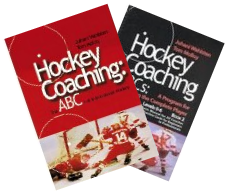Quote by: EricI recently came across a copy of the Lener "Transition: Defense to Offense" and have found it to be a great resource. I'm not sure on copyright rules but if it is legal or if someone who knows him gets permission, I could scan and post it. But I would feel most comfortable with his permission.
I am constantly looking for handouts from coaching clinics, seminars, etc to add to my collection. If anyone has any or has a good website, (other then this one of course!) with some on it, I would love to get in touch and swap.
This site has several well thought out outlines and handouts for free.
http://www.omha.net/flash.asp?page_id=291
Eric,
Slava's and Erkka's books are copyrighted. As a former employee of Hockey Canada (now a contractor) and as an acquaintance of both gentlemen, you shouldn't post them up here. For those who want to see if they still have some in stock, please contact Hockey Canada - The Breakaway Store: Orders 1-800-667-2242 Customer Service 1-800-667-2242
Don't forget Tom Renney and Mike Johnston also published "40 of the Best" in the same pamphlet form...
Check http://breakaway.hockeycanada.ca/ for manuals, videos, etc.
Thanks for sharing the OMHA site!
Regards,










I recently came across a copy of the Lener "Transition: Defense to Offense" and have found it to be a great resource. I'm not sure on copyright rules but if it is legal or if someone who knows him gets permission, I could scan and post it. But I would feel most comfortable with his permission.
I am constantly looking for handouts from coaching clinics, seminars, etc to add to my collection. If anyone has any or has a good website, (other then this one of course!) with some on it, I would love to get in touch and swap.
This site has several well thought out outlines and handouts for free.
http://www.omha.net/flash.asp?page_id=291